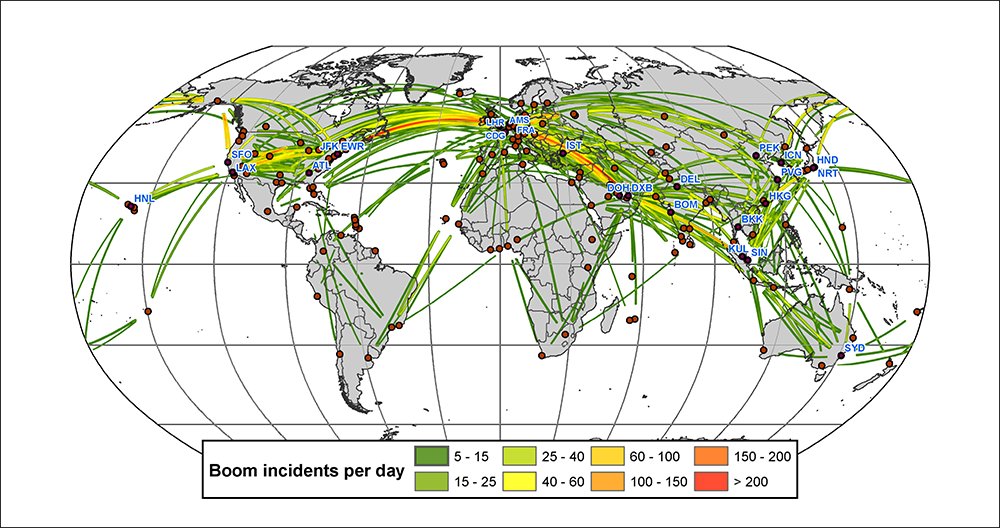Environmental performance of emerging supersonic transport aircraft
Working Paper
Noise and climate impacts of an unconstrained commercial supersonic network
This paper estimates the environmental impacts of reintroducing commercial supersonic transport (SST) aircraft into the global aviation fleet. We model the landing and takeoff (LTO) noise, sonic boom, and carbon dioxide (CO2) emissions from a new, unconstrained SST network of 2,000 in 2035. This fleet would support approximately 5,000 flights per day at 160 airports located predominately in Europe, North America, the Middle East, Asia, and Oceana. The two busiest airports, Dubai and London Heathrow, could each see more than 300 operations per day. Other airports that could see 100 or more daily SST LTOs include Los Angeles, Singapore, San Francisco, New York-JFK, Frankfurt, and Bangkok.
The aircraft could double the area around airports exposed to substantial noise pollution compared to existing subsonic aircraft of the same size. Substantial parts of the world would experience disruptive sonic booms from the new SST aircraft. Canada, Germany, Iraq, Ireland, Israel, Romania, Turkey, and parts of the United States would experience frequent sonic booms; the most heavily impacted regions could be exposed to between 150 and 200 incidents per day, or up to one boom every five minutes over a hypothetical 16-hour flight day.
The SST fleet would emit an estimated 96 (88 to 114) million metric tons (MMT) of CO2 per year, roughly the combined emissions of American, Delta, and Southwest Airlines in 2017, and an additional 1.6 to 2.4 gigatonnes of CO2 over their 25-year lifetime. That would consume about one-fifth of the entire carbon budget afforded international aviation under a 1.5°C climate trajectory, assuming that aviation maintains its current share of emissions.

